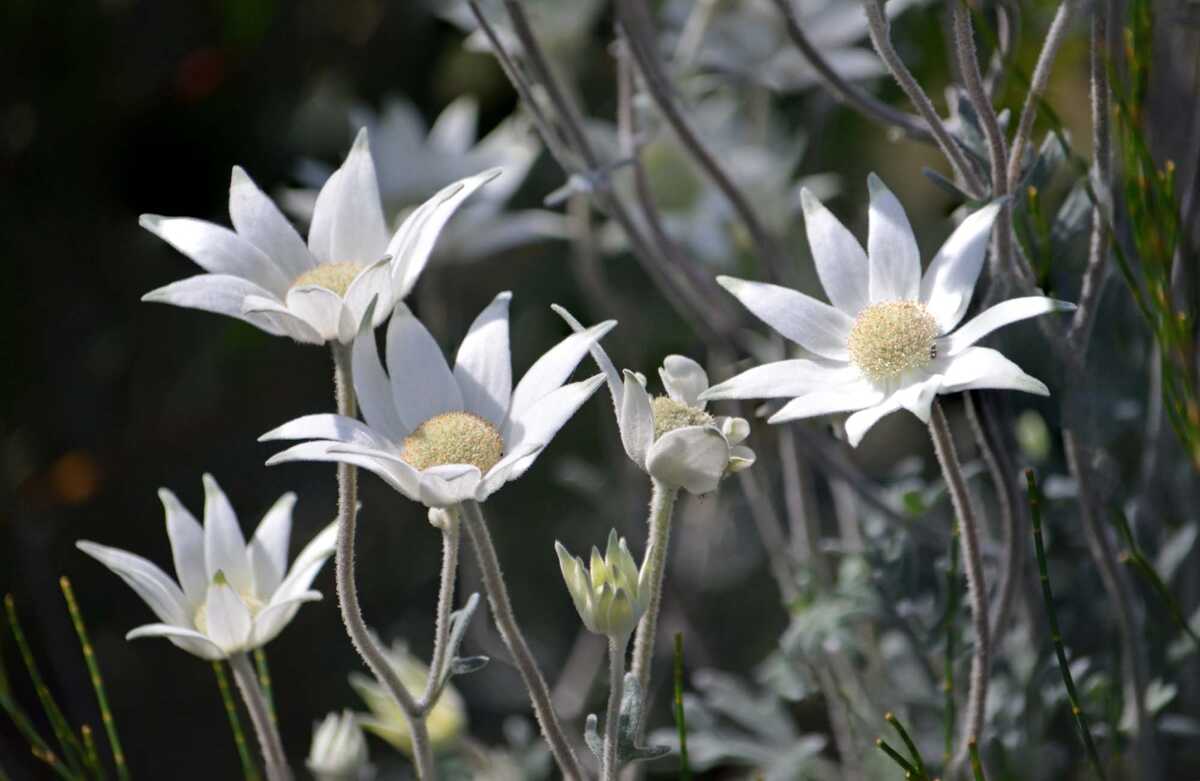{{{description}}}
(Eucalyptus oreades) This tree typically grows up to 40 m high, with a 1.8 m wide trunk. Its smooth white or yellow bark sheds in strips. Young plants have elliptical to egg-shaped leaves of dull greyish green colour that are 8–20 cm long and 3.5–10 cm wide. Adult leaves are of the same colour, just of glossy. They are lance-shaped to curved, 7.5–18 cm in length and 1–3.2 cm wide. The flower buds are are diamond- to spindle-shaped and arranged in groups of seven. From January to March the trees blossom in a white colour. The fruits are woody capsules about 0.5-1 cm long with valves near rim level. It is widespread in the Blue Mountains.

(Eucalyptus haemastoma) This tree grows up to 12–15 m and forms a lignotuber. Its bark is smooth white, silvery grey or yellow bark with insect scribbles. Young plants have elliptical or egg-shaped leaves 7–15 cm long and 2–6 cm wide. Adult leaves are lance-shaped or curved, 9–21 long and 1.5–3.5 cm wide. Flower buds are arranged in groups of 9-15. Oval mature buds are oval are 4–6 mm long with a conical to rounded operculum. They blossom between July and November with white flowers. Fruits are woody capsules 5–9 mm long with valves near rim level. This scribbly gum grows in woodland on shallow sandy soil and occurs between Lake Macquarie and the Royal National Park.
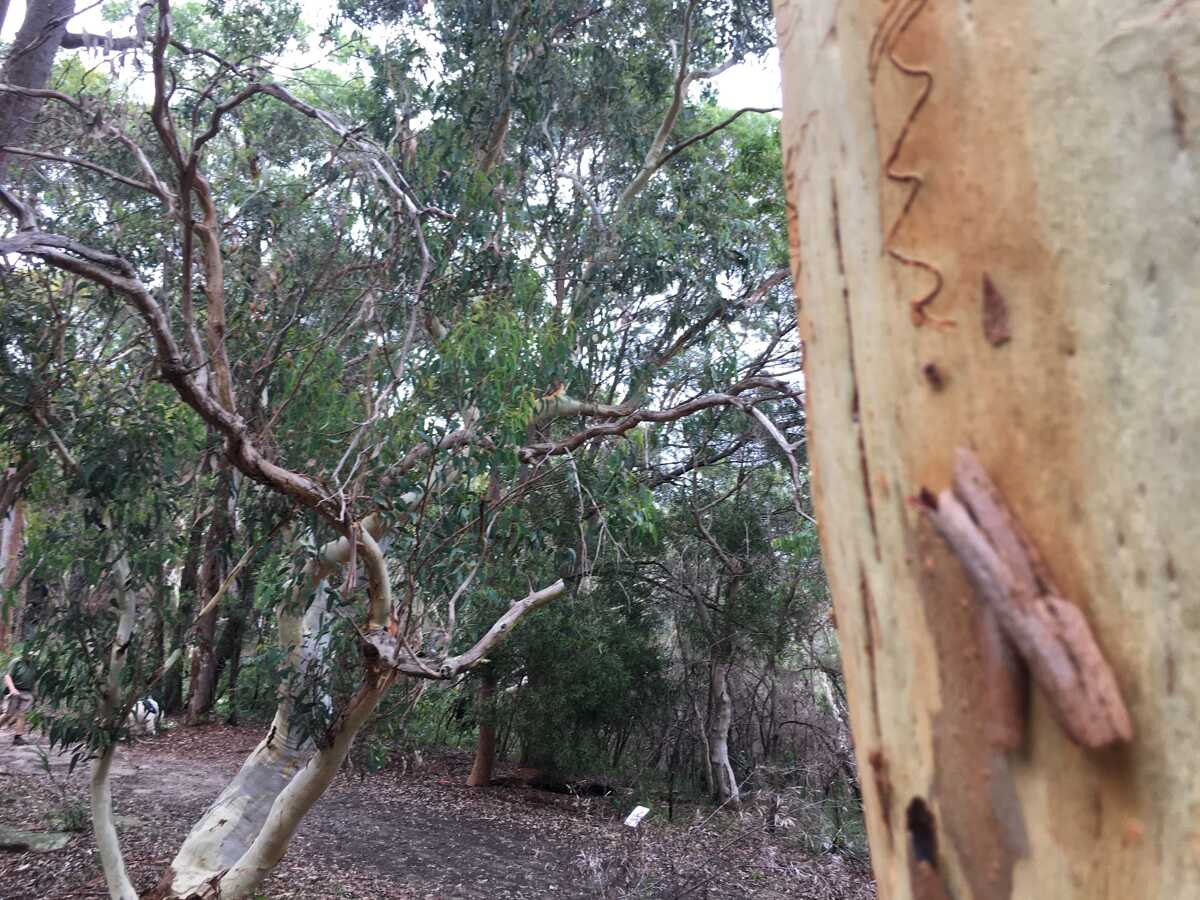
(Eucalyptus sieberi) This tree grows up to 25–45 m high but does not form a lignotuber. Its bark is rough on the trunk and larger branches, and smooth, white to yellow above. Young plants have egg- to lance-shaped bluish-green to glaucous leaves 6–17 cm long. Adult leaves are glossy, lance-shaped to curved, 8.5–19.5 cm long. Flower buds are arranged in groups of between 7-15. Mature buds are oval to club-shaped, 3–5 mm long with a rounded or flattened operculum. They blossom in September to January with white flowers. The woody fruits are barrel-shaped or conical capsules 6–11 mm long with valves near rim level. Silver-top Ash is found in the western slopes and plains of New South Wales.
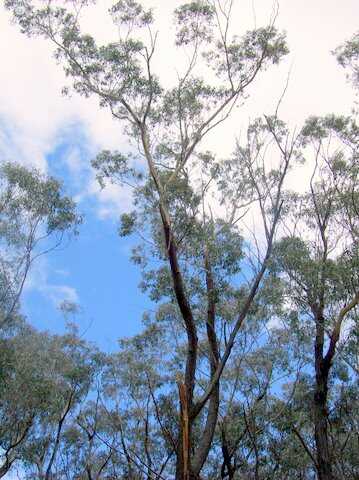
(Melaleuca alternifolia) This small tree (about 7 m in height) is endemic to Australia. It grows along streams and in swampy places. It has a bushy crown and whitish, papery bark. Its leaves are arranged alternately, sometimes scattered or whorled. Its leaves are smooth and soft, 1.0–3.5 cm long and rich in oil with the glands prominent. They blossom over a short period, mostly spring to early summer in white or cream-colored masses. Its woody, cup-shaped fruits are scattered along the branches.

(Fabaceae) The typical "pea" flower consists of 5 irregularly shaped petals - the "standard", two "wings" and two lower petals joined along their upper edge to form the "keel". The keel encloses 10 stamens, the structure of which helps in distinguishing the various genera within the family. The flower ranges in colours from yellow, orange, red to purple. Its pod is a simple dry fruit.

(Callistemon) This evergreen shrub has brush like flowers that bloom in spring and summer. Its filaments are usually yellow or red. Its woody fruit contains hundreds of tiny seeds. Its leaves are often coloured. The shrubs are mostly found in the more temperate regions of Australia.
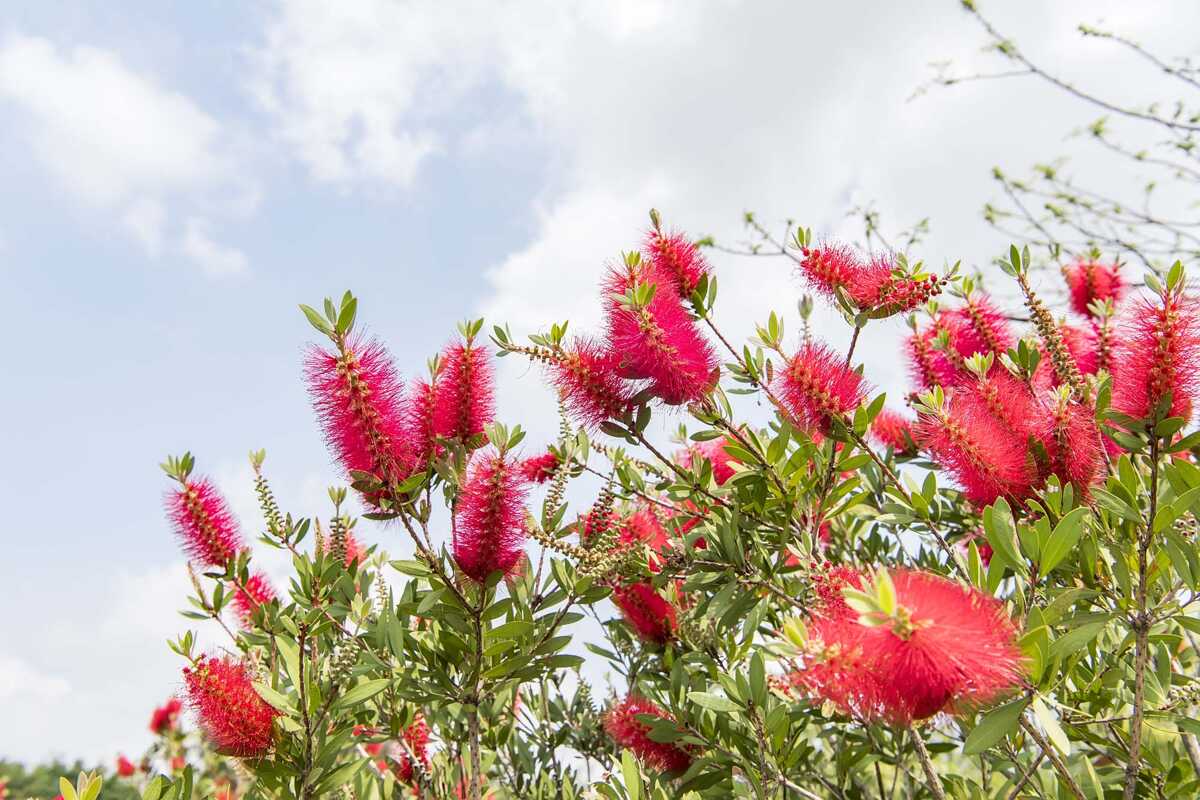
(Orchidaceae) The Orchidaceae are a diverse and widespread family of flowering plants, with blooms that are often colourful and fragrant. Some orchids have single flowers, but most have a racemose inflorescence, sometimes with a large number of flowers. The flowers have an outer whorl with three sepals and the inner whorl with three petals. They bloom in a great range of colours.
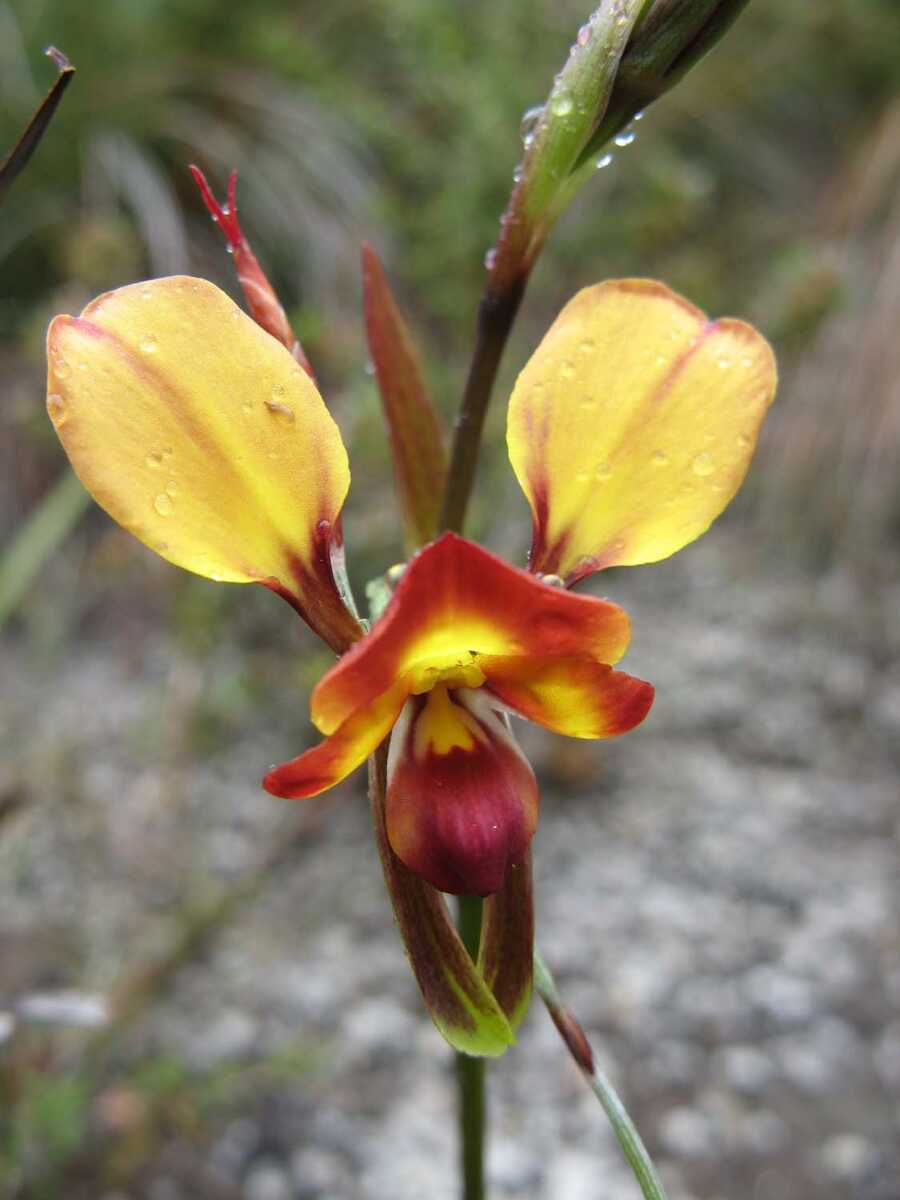
(Cyperaceae) This perennial or annual herb often has a grass-like or rush-like habit, tufted or rhizomatous producing. Culms (aerial stems) are usually solid. Leaves grow only at base of the culm with closed tubular sheaths. It blooms with small flowers. Fruits are small seed-like nuts.
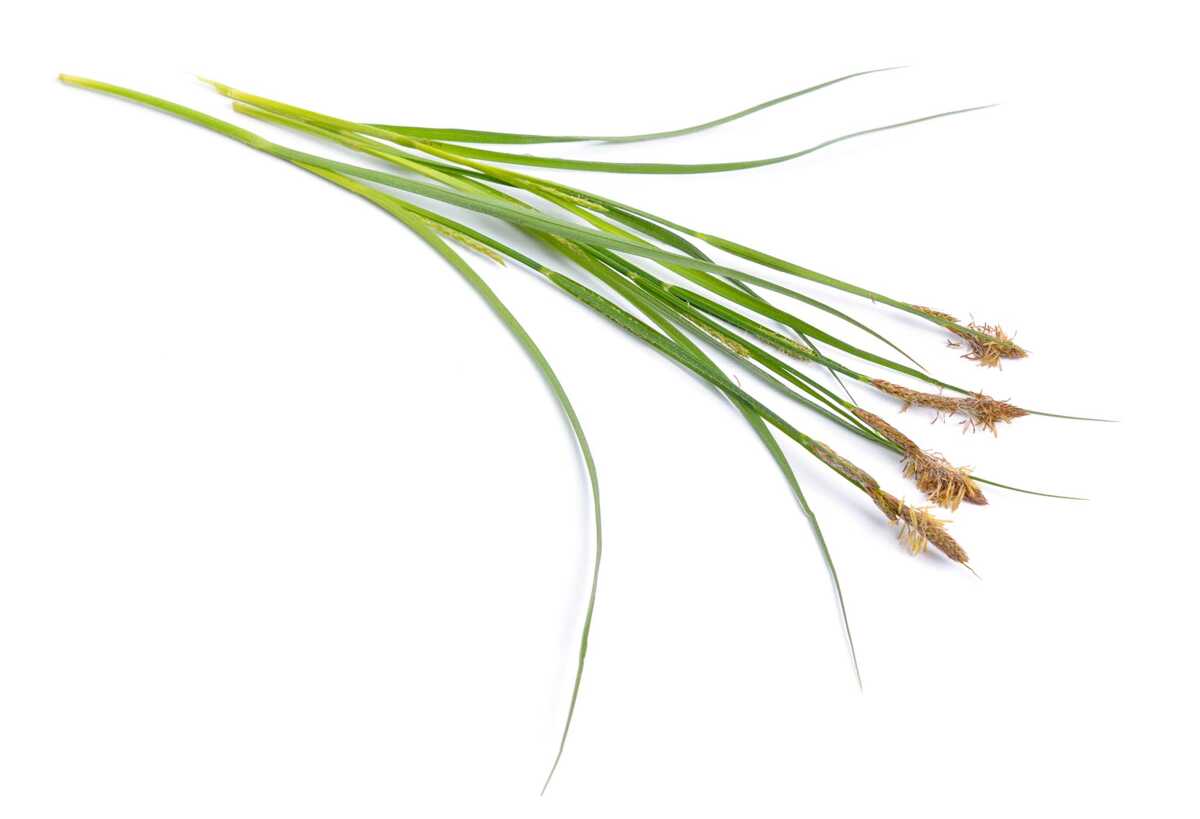
The species range from prostrate shrubs that are less than 50 cm tall to trees that are 35 m high. Its brightly coloured petal-less flowers consist of a calyx tube that splits into 4 lobes with long styles. They are good bird-attracting plants. Honeyeaters in particular are common visitors.
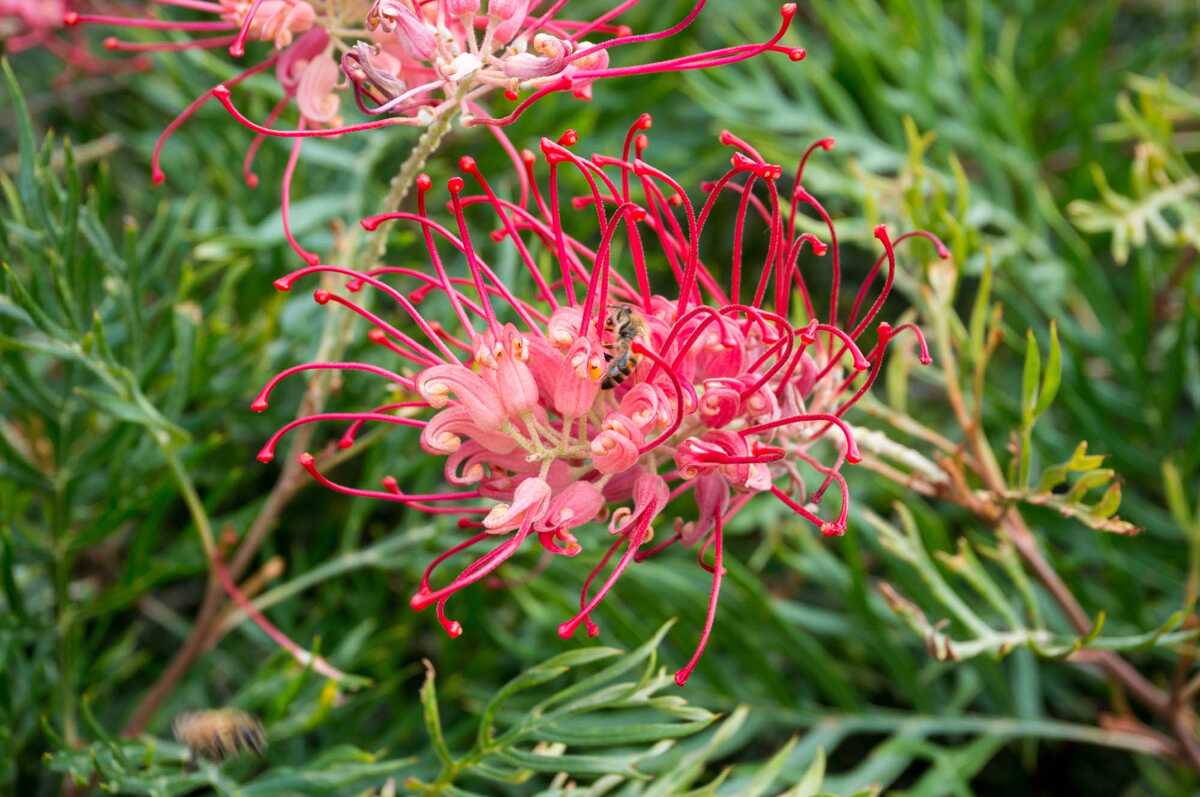
(Ericaceae) Heaths have evergreen leaves without stipules. Their blossoms range in colour considerably. The petals are often fused with shapes ranging from narrowly tubular to funnelform or widely urn-shaped.
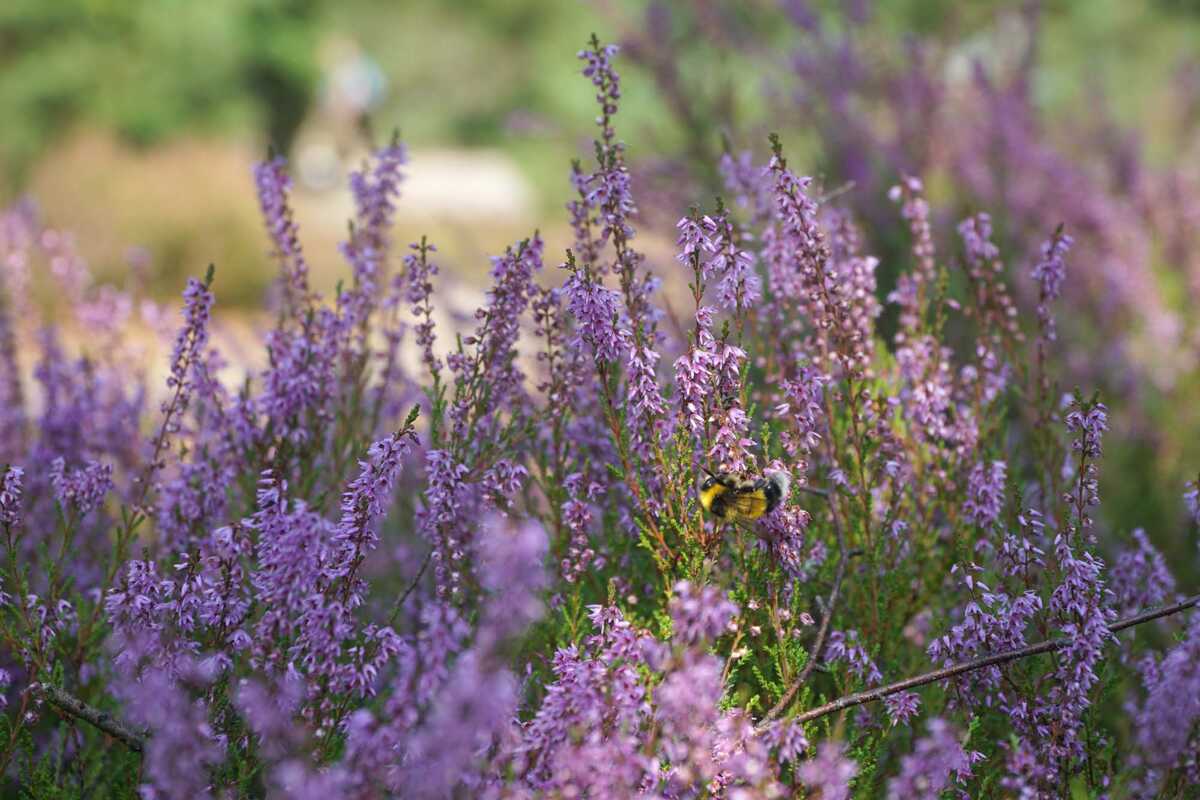
(Mimosoideae) Acacia, commonly known as the wattles or acacias, is a large genus of shrubs and trees. They bear vertically oriented green phyllodes, broadened leaf petioles, adaptated to hot climates and droughts. Some phyllodinous species have a colourful aril on the seed. A few species have cladodes rather than leaves.
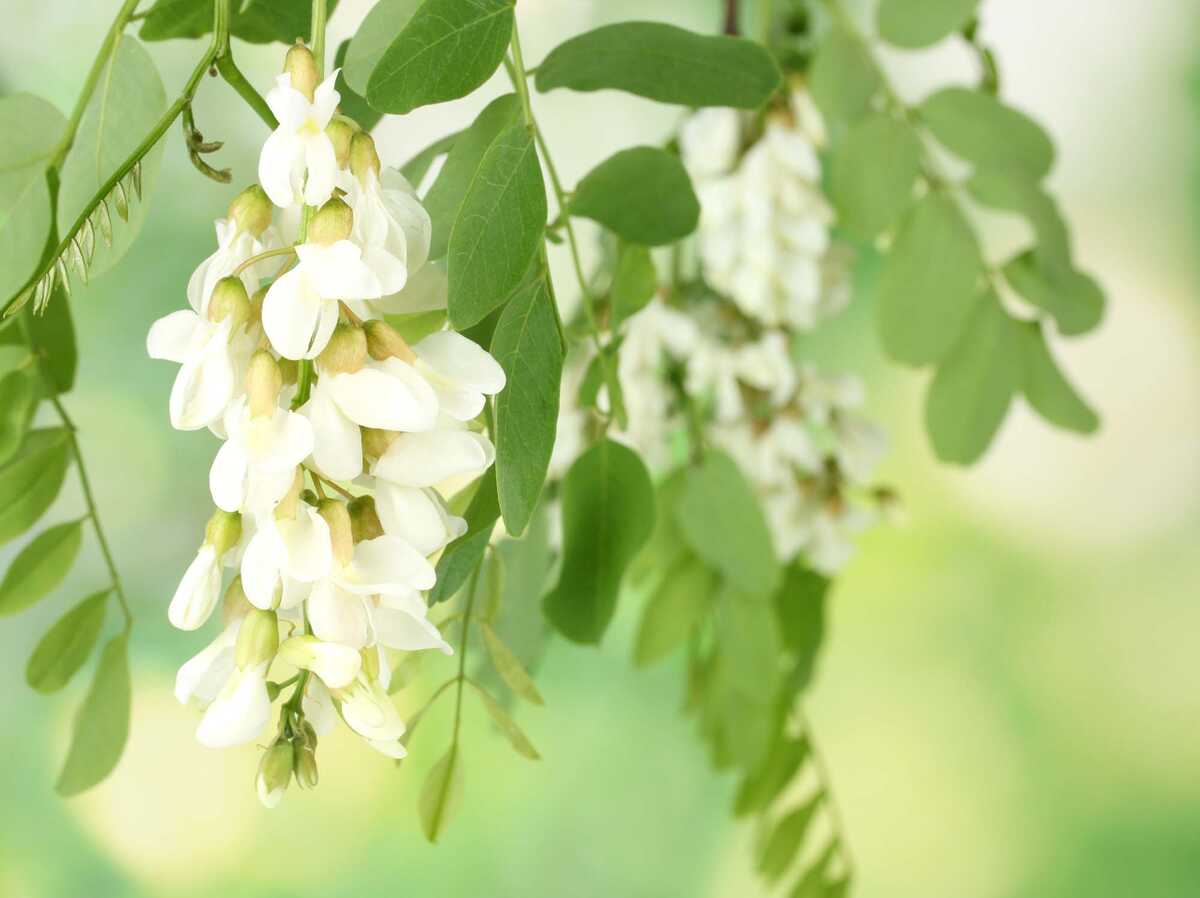
Senna includes herbs, shrubs, and trees. its leaves are pinnate with opposite paired leaflets. Its inflorescences are racemes at the ends of branches or emerging from the leaf axils. Its flower has five sepals and five usually yellow petals. There are ten straight stamens. Its fruit is a legume pod containing several seeds.
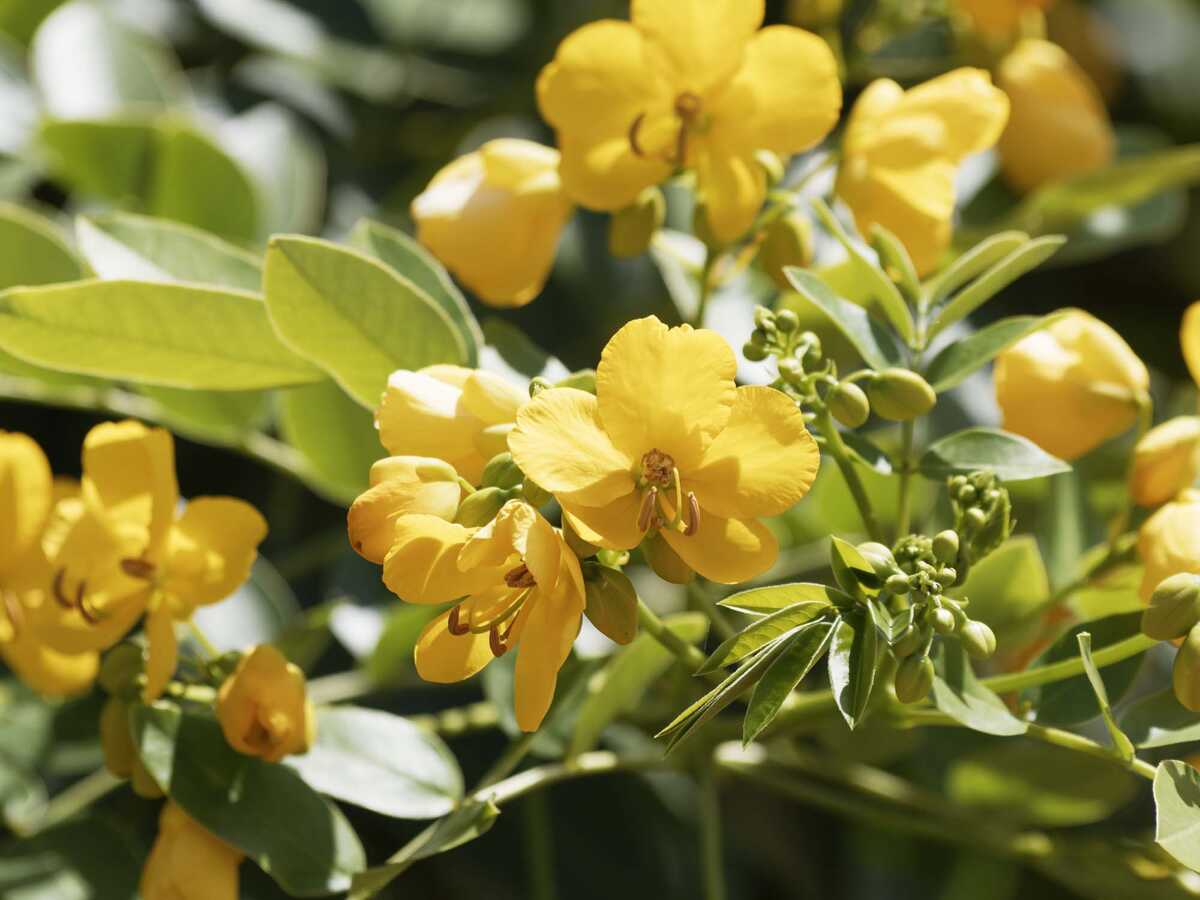
These trees have a rough bark. The juvenile leaves are hairy with raised oil glands, while the adult leaves are usually glabrous and paler on the lower surface. All leaves are arranged in opposite pairs. The flower buds are arranged in groups of 3 or 7 with 4 or 5 small sepals in a flower. Its petals and sepals are not fused to form a cap-like operculum. Its fruit is papery, hairy capsule with longitudinal ribs.
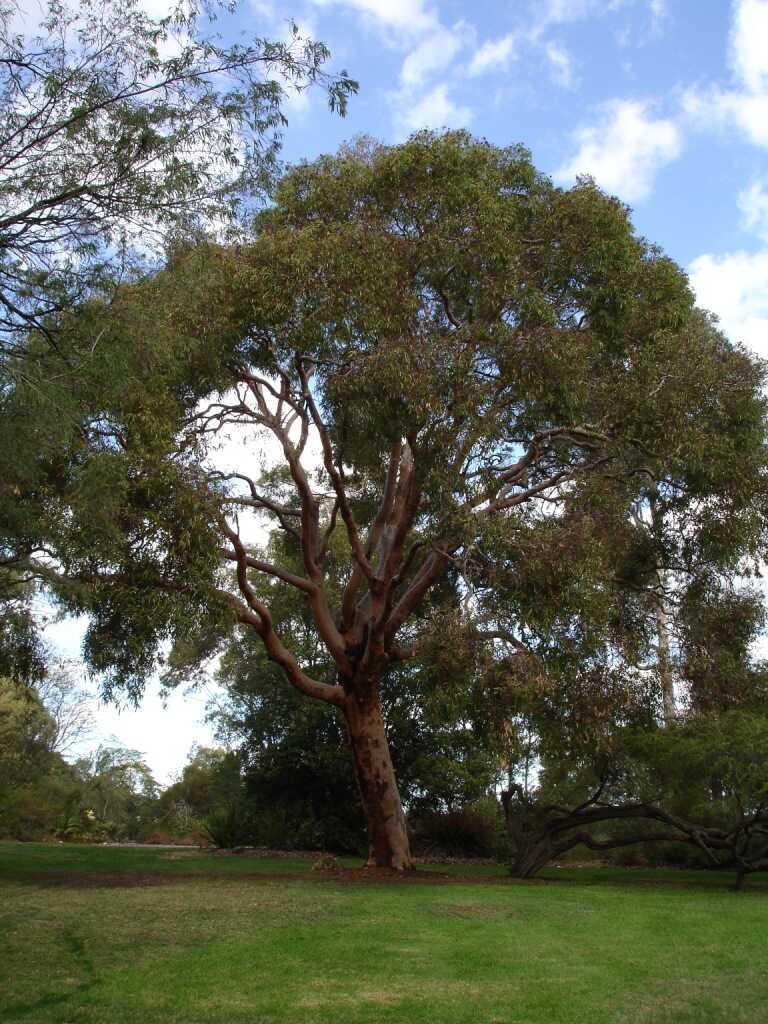
This Eucalypts tree either has a rough, fibrous or flaky bark, or smooth bark that is shed in small flakes or short strips. Its leaves are arranged alternately (strictly disjunct opposite, but appearing alternate), with oil glands. Its flower buds are arranged in groups on a branching peduncle, each branch usually with 7 buds. Its fruit is a woody capsule with a depressed dics and enclosed valves.
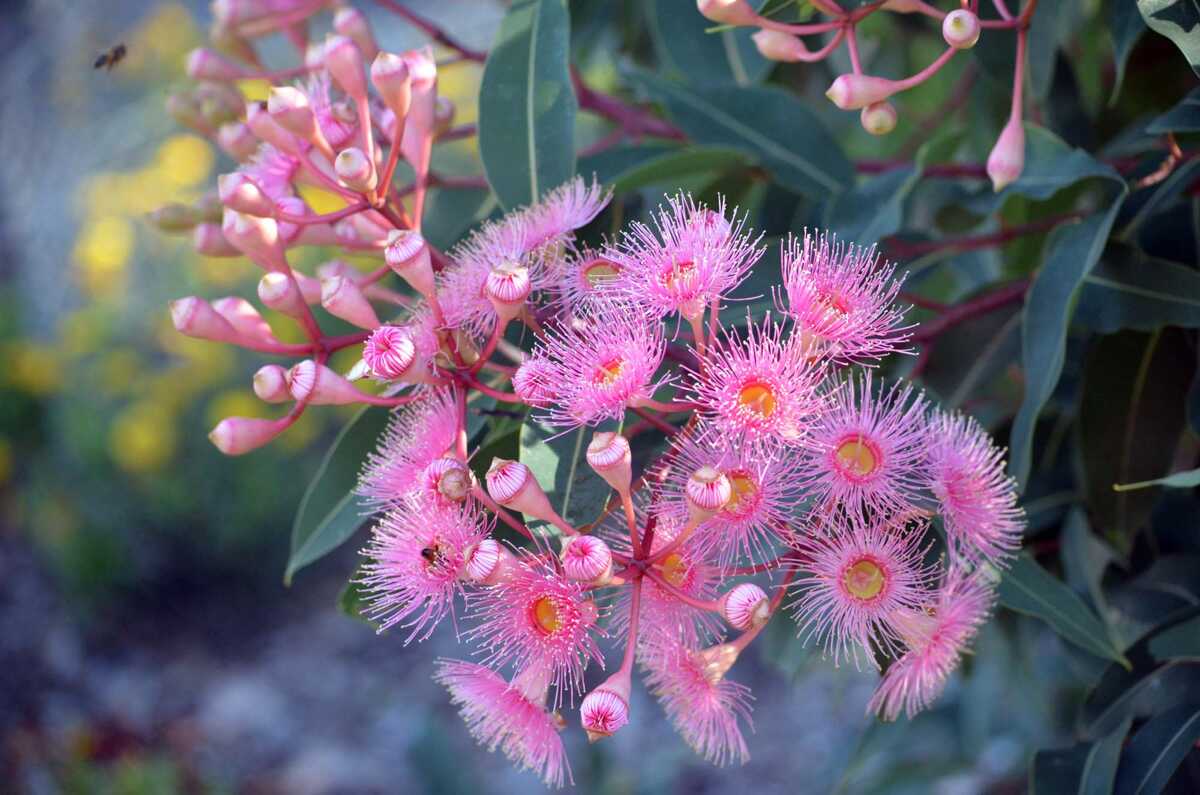
(Thelymitra ixioides) This ground growing orchid has a small, 2cm long leaf, a 60 cm long stem and clusters of up to 8 flowers. These are about 2 -3 cm in diameter in blue or mauve with dark spots. It grows on heath and wet eucalypt forest.
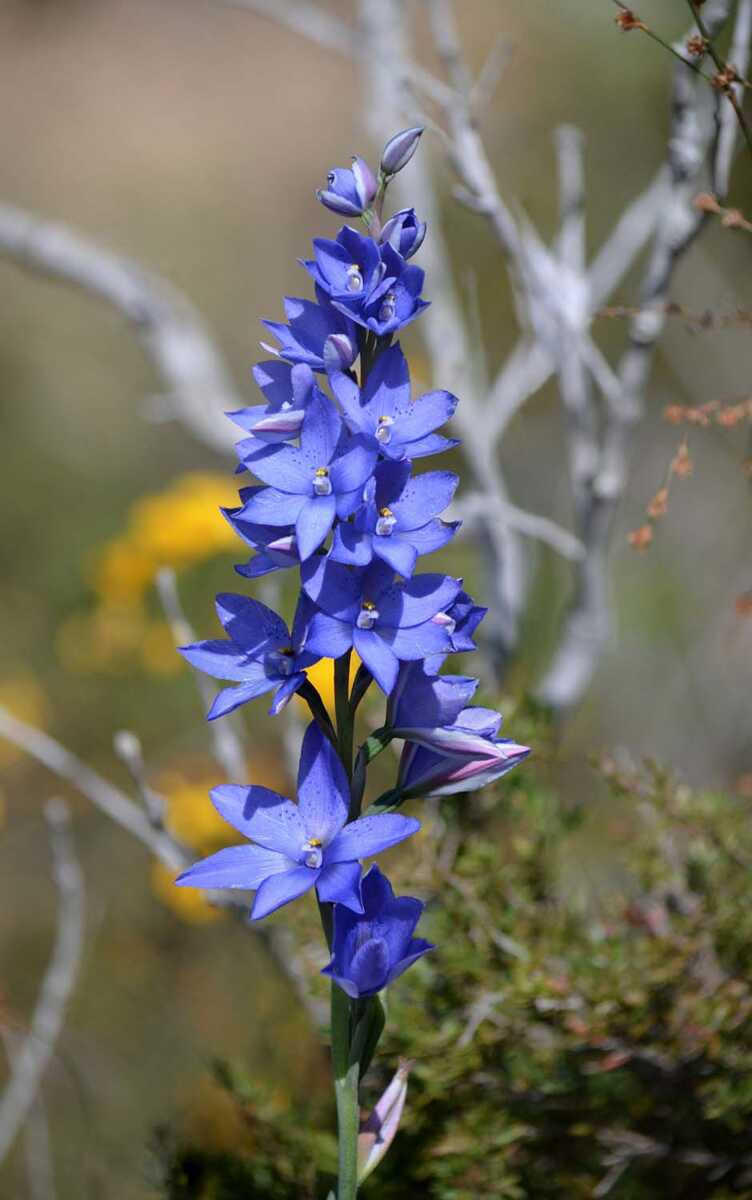
(Poaceae) Their stems are usually hollow, plugged at the nodes, where the leaves are attached. Their leaves alternate, and have parallel veins. Some leaves of grasses are so sharp that they can cut human skin. Each flower has one or more florets.
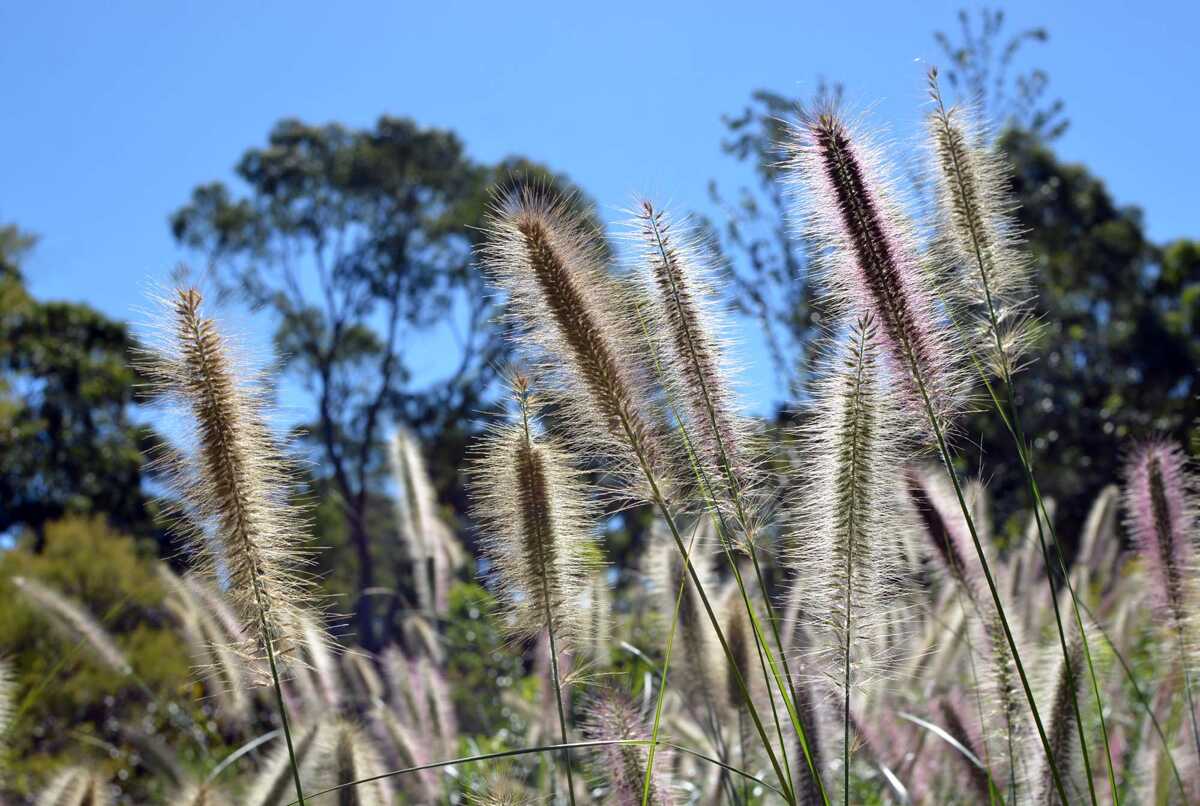
(Asteraceae) The leaves can be alternate, opposite, or whorled. In the flower what looks like one single flower is really a cluster of smaller flowers. The individual flowers have 5 fused petals, pappus instead of sepals.
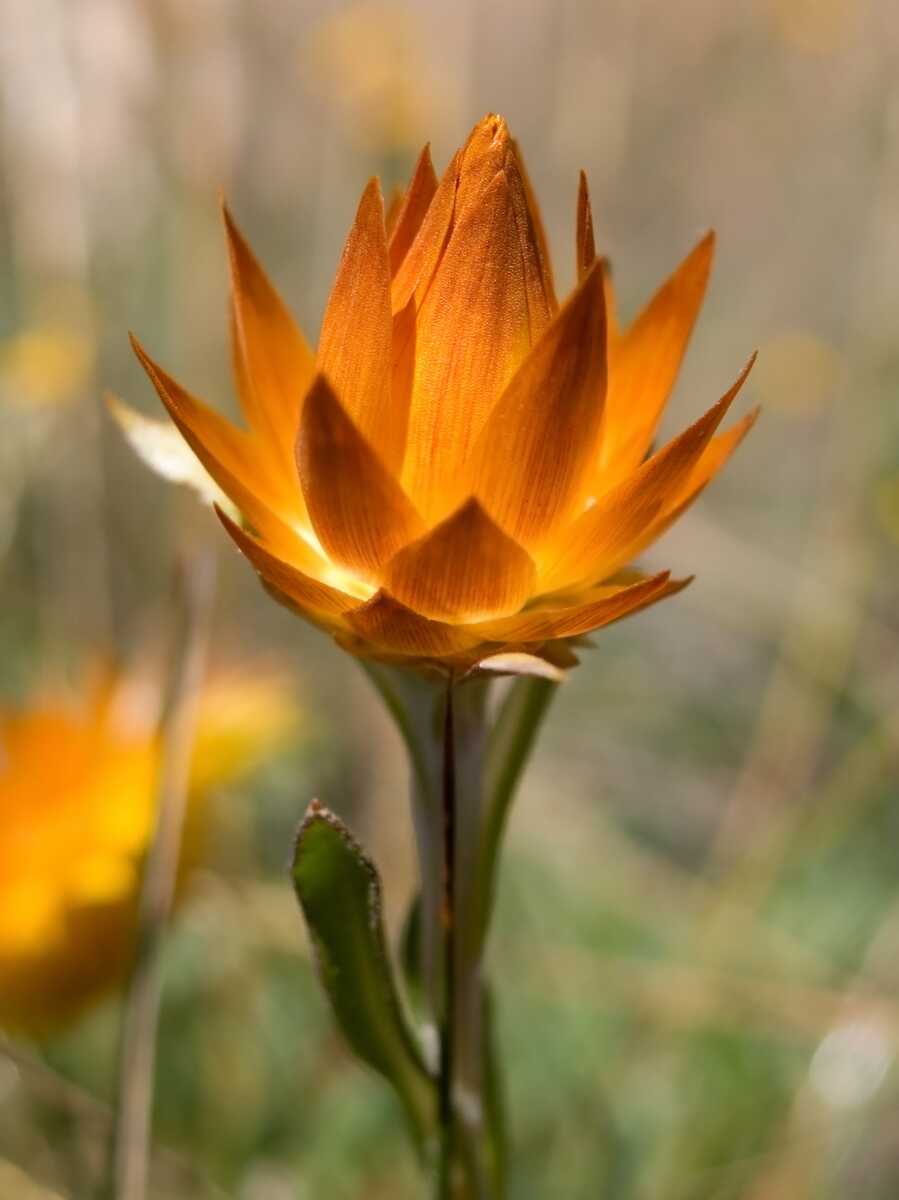
(Banksia serrata) This gnarled tree grows up to 16 m tall. It has wrinkled grey bark, shiny dark green serrated leaves and large yellow or greyish-yellow flower spikes appearing over summer. The spikes turn grey with age. Its fruit are large, grey, woody seed pods called follicles.

(Telopea speciosissima) This shrubs flower is the emblem for its home state of New South Wales. The shrub grows up to 4 m in height and 2 m in width. From the pronounced woody base several stems arise with dark green leaves. It has striking large red springtime flowerheads, each having hundreds of individual flowers.
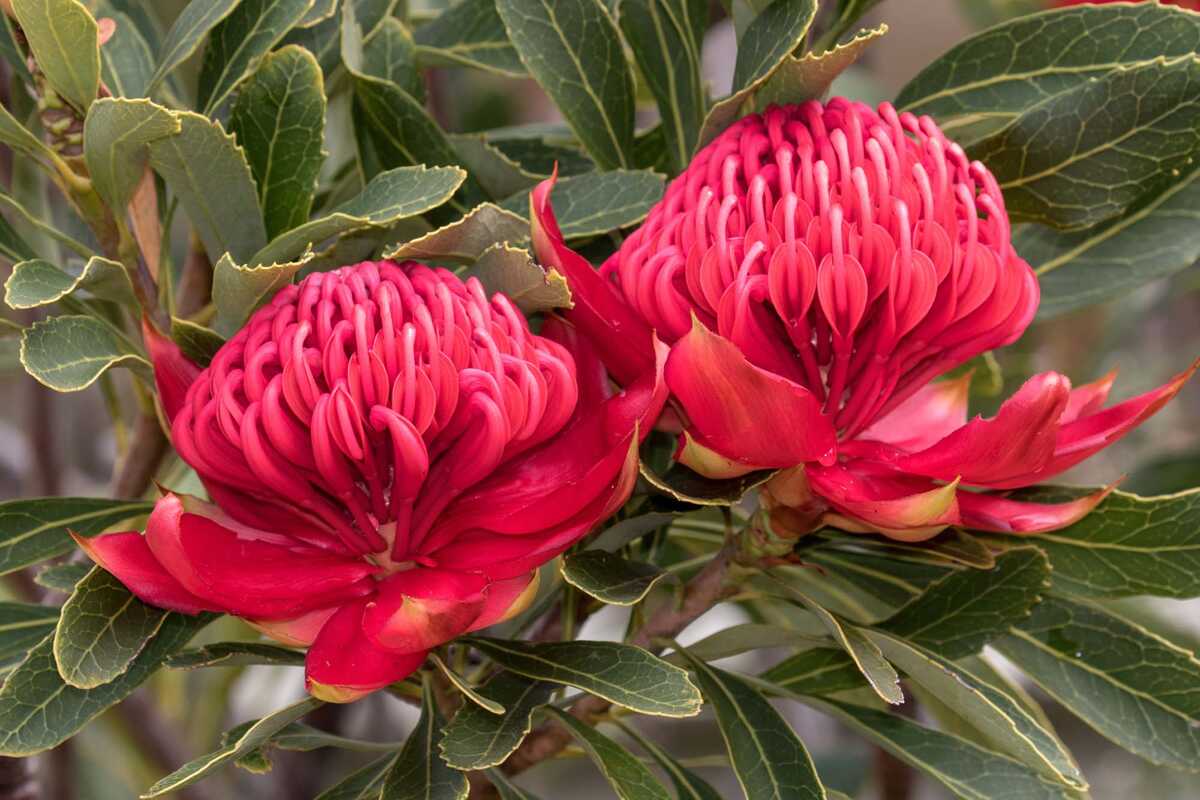
(Boronia) These shrubs paired leaves, flowers that are arranged in groups and have 4 separate petals, 8 stamens and 4 carpels.
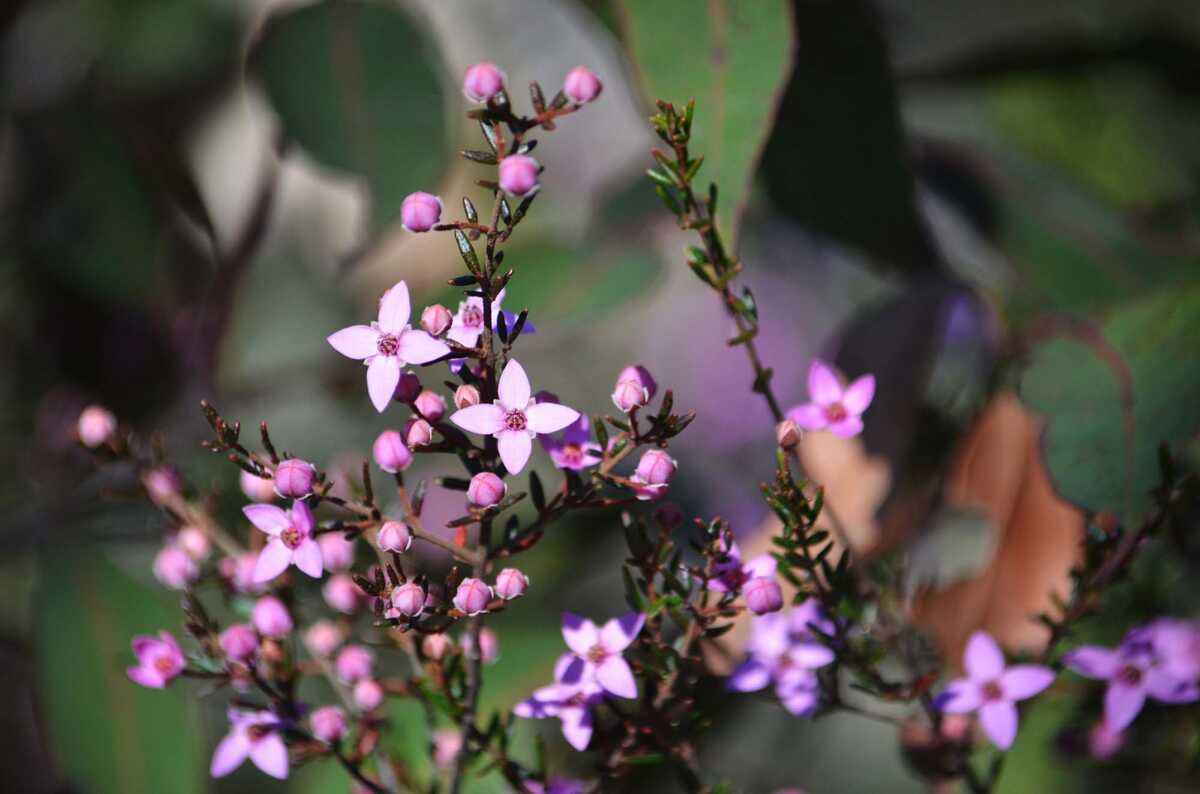
(Lamiaceae) Mints grow as aromatic shrubs or trees.Their flowers have petals fused into an upper lip and a lower lip which grow symmetrical and have 5 united petals and 5 united sepals. Their leaves grow as pairs, each pair at right angles to the previous one or whorled.
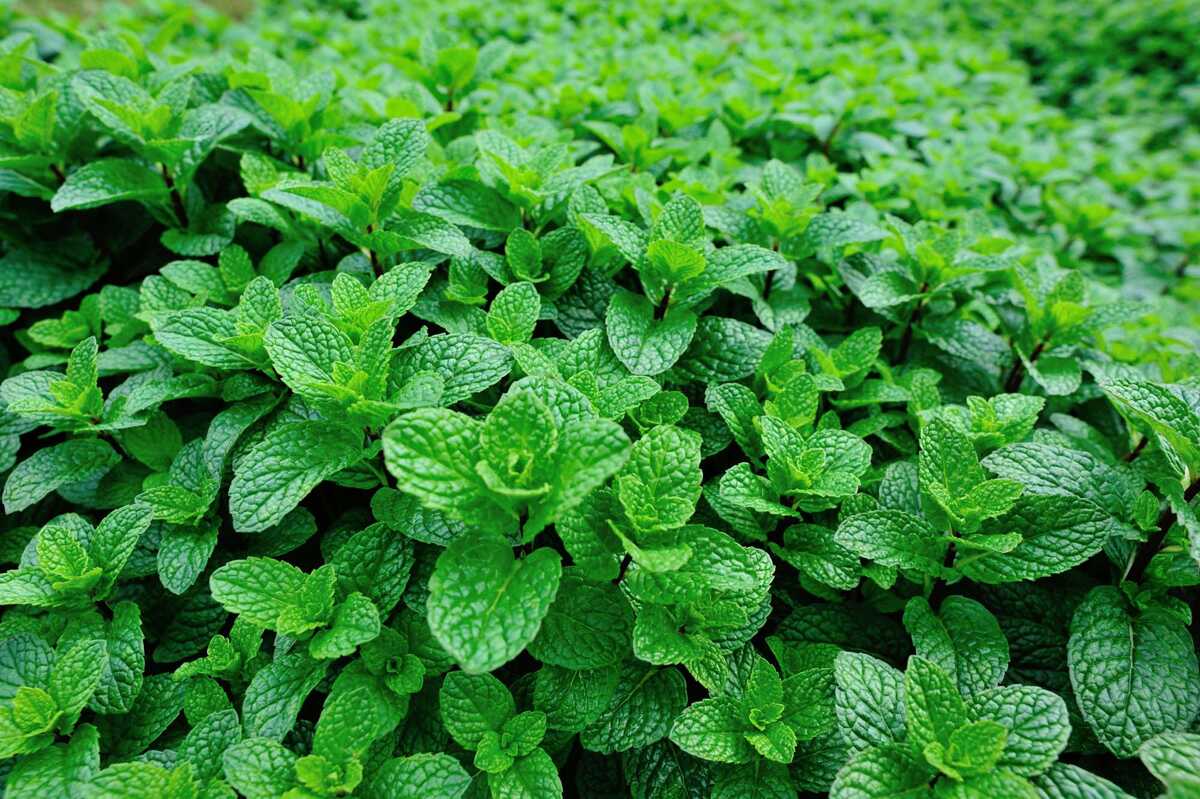
These shrubs or trees have alternate or opposite simple leaves with stipules. Its small and inconspicuous flowers have 4 or 5 sepals. Its fruits are fleshy with seeds.
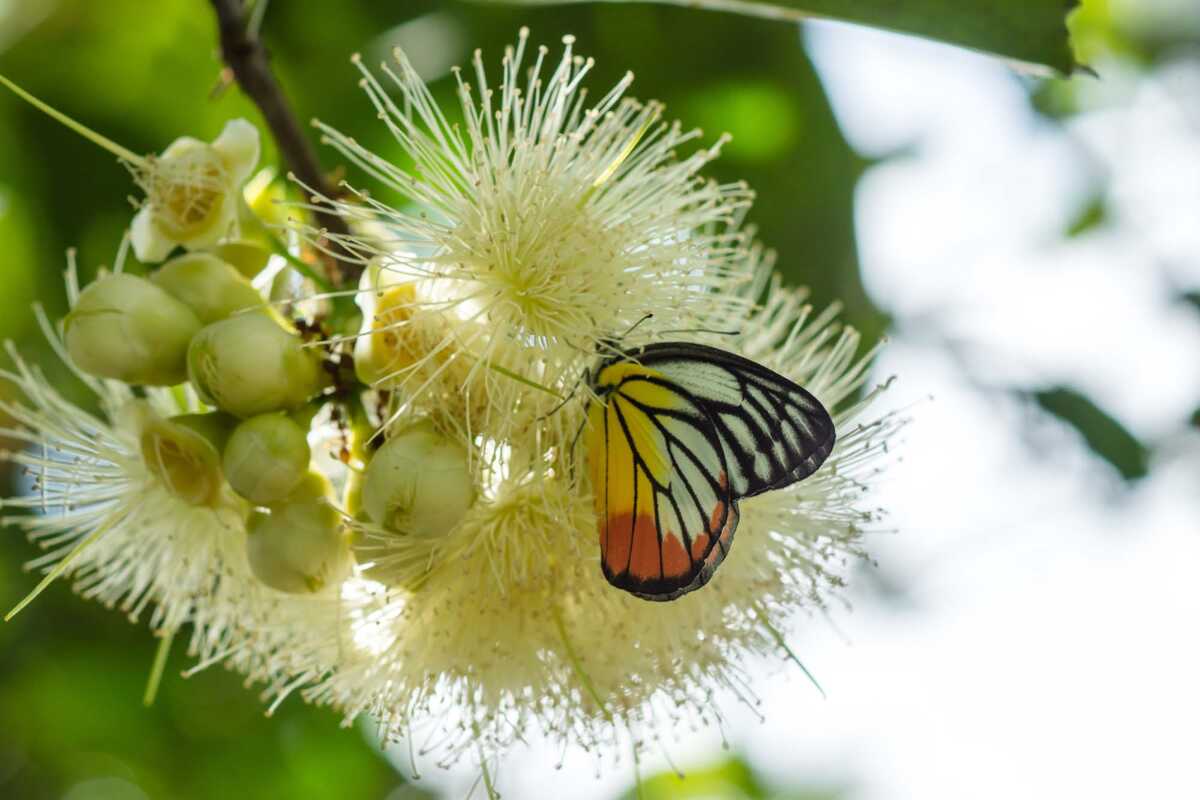
(Actinotus helianthi) This shrub grows up to 50 cm in height. The stem, branches and leaves are pale grey with downy hair. Its leaves are up to 10 cm long, its daisy-shaped flowerheads are 5 - 8 cm wide in cream to white colour. They grow in sandstone heathland in coastal New South Wales.
